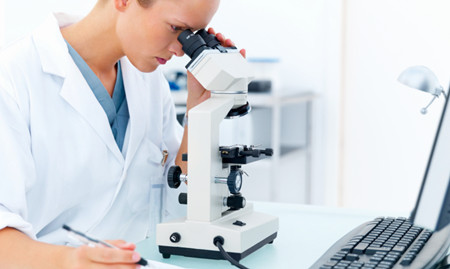Handheld spectral analyzer turns smartphone into diagnostic tool
October 26, 2017
Source: Bioengineering;
 860
860

Researchers at the University of Illinois at Urbana-Champaign have developed technology that enables a smartphone to perform lab-grade medical diagnostic tests that typically require large, expensive instruments. Costing only $550, the spectral transmission-reflectance-intensity (TRI)-Analyzer from Bioengineering and Electrical & Computer Engineering Professor Brian Cunningham’s lab attaches to a smartphone and analyzes patient blood, urine, or saliva samples as reliably as clinic-based instruments that cost thousands of dollars.
“Our TRI Analyzer is like the Swiss Army knife of biosensing,” said Cunningham, the Donald Biggar Willett Professor of Engineering and director of the Micro + Nanotechnology Lab at Illinois. “It’s capable of performing the three most common types of tests in medical diagnostics, so in practice, thousands of already-developed tests could be adapted to it.”
In a recently published paper, Cunningham’s team used the TRI Analyzer to perform two commercially available assays—a test to detect a biomarker associated with pre-term birth in pregnant women and the PKU test for newborns to indirectly detect an enzyme essential for normal growth and development. Their tests results were comparable to those acquired with clinic-grade spectrometer instrumentation.
“The TRI Analyzer is more of a portable laboratory than a specialized device,” said Kenny Long, an MD/PhD student and lead author of the research study.
Among the many diagnostic tests that can be adapted to their point-of-care smartphone format, Long said, is an enzyme-linked immunosorbent assay (ELISA), which detects and measures a wide variety of proteins and antibodies in blood and is commonly used for a wide range of health diagnostics tests. The system is capable of detecting the output of any test that uses a liquid that changes color, or a liquid that generates light output (such as from fluorescent dyes).
The TRI Analyzer operates by converting the smartphone camera into a high-performance spectrometer. Specifically, the analyzer illuminates a sample fluid with the phone’s internal white LED flash or with an inexpensive external green laser diode. The light from the sample is collected in an optical fiber and guided through a diffraction grating into the phone’s rear-facing internal camera. These optical components are all arranged within a 3D-printed plastic cradle.
The TRI Analyzer can simultaneously measure multiple samples by using a microfluidic cartridge that slides through an opening in the back of the cradle. This ability to analyze multiple samples quickly and reliably makes the Analyzer suitable for patients who lack convenient access to a clinic or hospital with diagnostic test facilities or for patients with urgent health situations requiring rapid results.
“Our Analyzer can scan many tests in a sequence by swiping the cartridge past the readout head, in a similar manner to the way magnetic strip credit cards are swiped,” said Long.
In addition to its applications in health diagnostics, Cunningham said the TRI Analyzer can also be applied to point-of use applications that include animal health, environmental monitoring, drug testing, manufacturing quality control, and food safety. The patented technology is available for license.
A paper describing the results in detail, entitled “Multimode smartphone biosensing: the transmission, reflection, and intensity spectral TRI Analyzer,” will be published in an upcoming issue of Lab on a Chip, but is currently available online. The work was supported by the National Science Foundation.
By Ddu
Read more on
- Things to Know before Buying Newborn Baby Incubators March 31, 2022
- Veracyte, J&J team up on early lung cancer detection January 28, 2019
- Highly Resistant Food Poisoning Bug Responds to Antibiotics September 6, 2018
- Smartphone Based Diagnosis to Identify Mosquitoes Transmitting Infection September 5, 2018
- 3 Natural Plant Extracts Manufacturers on Drugdu.com September 4, 2018
your submission has already been received.
OK
Subscribe
Please enter a valid Email address!
Submit
The most relevant industry news & insight will be sent to you every two weeks.



